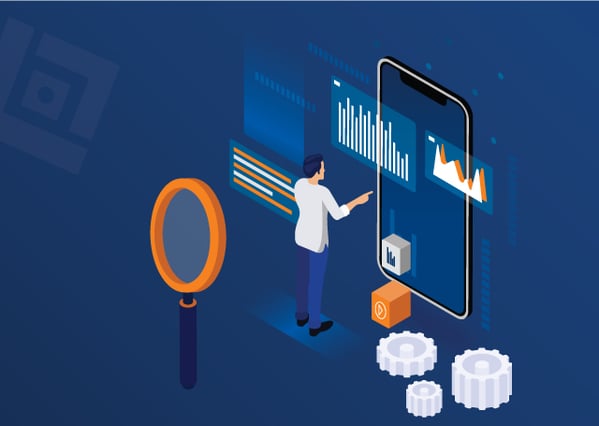
The software testing industry has experienced rapid growth over the past year, driven by the continuous emergence of new testing methodologies, tools, and practices. With the digital transformation era underway, organizations must ensure their software products are tested in order to meet customer needs and launch successfully.
This blog post provides CTOs with essential insights into the current trends in software testing, and what they need to know to make critical decisions regarding testing software products.
Increased Usage of Javascript-based Tools
Having been on the scene for two decades, JavaScript is still transforming and evolving to facilitate better software testing. The introduction of frameworks such as React and Node.js, has made it easier for developers and testers to create, test, and interact with web applications quickly.
Additionally, the growth in popularity of JavaScript-based tools has enabled developers to easily create cross-platform mobile apps faster than ever before. As of 2022, according to the statistics posted by Radix, 23% of developers agreed that JavaScript is moving toward the top of mobile app development with another 57% agreeing with the statement. That being said, JavaScript is becoming a key component in software development and an increasingly popular tool for testing software products.
QAOPs
Another emerging practice that integrates QA into software delivery pipelines is QAOPs. This practice focuses on automating testing/QA processes and integrating them into the software development lifecycle. It integrates QA practices with development and IT operations to create a long-term, sustainable approach to quality assurance. Compared to traditional QA, QAOps integrates QA throughout the SDLC while ensuring the highest quality, faster release cycles, and fewer errors.
Big Data and Analytics Testing
Big data refers to large sets of data that require sophisticated software tools to process, store and analyze. As businesses increasingly rely on big data to make decisions, testing these applications has become more important than ever before.
Testing solutions for big data must not only ensure the accuracy of the analysis but also provide acceptable performance levels with an emphasis on scalability and security. Together with big data, analytics testing will become integral to the software testing landscape and an essential piece of any CTOs’ strategy. Both will serve to provide organizations with the insights and data needed to make informed decisions that will help them move forward in the digital transformation era.
Scriptless Test Automation
Scriptless, also called codeless, testing is a method that automates tests using tools instead of the usual manual scripting. This approach reduces the complexity of manual testing and speeds up the entire process by empowering testers to create, execute, and analyze tests quickly and efficiently.
By using scriptless automation tools, testers can quickly automate tedious tasks and eliminate time-consuming manual processes associated with test creation. This helps developers save time in terms of writing code for different testing scenarios, as well as in running and analyzing test results. ACCELQ, Kobiton, Cerberus Testing, and TestComplete, are some of the best scriptless test automation tools that are gaining traction in the software testing industry. Be sure to check them out if you are planning to integrate scriptless test automation in your software testing process.
IoT Testing
IoT, or the Internet of Things, is being increasingly used in various industries including healthcare, robotics, and utilities. This has led to a surge in demand for testing solutions that can help them monitor, diagnose and maintain their devices.
IoT testing includes functional and integration testing, performance testing, usability testing, and security testing to ensure the quality of IoT products before they are released. Furthermore, with the increased importance of connected devices and their potential for data breaches, it has become increasingly important to consider security as one of the main components of IoT testing.
AI and ML Testing
Today's applications need to run on different platforms, whether it's web or mobile applications. Artificial intelligence (AI) and machine learning (ML) have already had a significant impact on the software testing industry as they provide businesses with automated capabilities that can help them streamline their testing processes while providing better visibility into the end-user experience.
By using AI and ML-based tools organizations are able to bridge testing gaps by augmenting people's skills and capacities. AI and ML-based tools can be used to automate test case creation, perform anomaly detection, improve bug triage processes, and generate accurate results. By providing such capabilities, these tools can help applications to be on the market faster.
Shift-left Testing
Usually performed earlier in the lifecycle of software and system development, shift left testing helps to identify potential issues and bugs before they can become major problems later on. This means that the team is able to reduce the time spent in debugging and instead focus more on features and functionality.
Shift-left testing prevents all harm that late testing may bring including insufficient resources allocated to testing, undiscovered defects in design, architecture, and requirements, difficulty debugging and resolving problems, and project delays.
Overall, there are four ways to shift tests in the earlier life cycle of the software development cycle. These are traditional shift-left testing, incremental shift-left testing, Agile/DevOps shift-left testing, and model-based shift-left testing.
Selenium 4
Selenium 4 is one of the biggest advancements in technology that has taken place in the Software Testing Industry. This new version focuses on enhanced user experience, improved test execution and reporting, higher concurrency with parallel tests, and improved stability and performance.
The latest tool comes with enhanced Selenium Grid architecture, W3C standardized protocol, revamped IDE, new APIs, relative locators, advanced diagnostics, and more. It has the potential to revolutionize web automation testing by taking it to a whole new level.
As one of the most popular automation testing tools, it offers great flexibility and scalability when it comes to automated cross-browser testing of web applications. With emerging trends in software testing, Selenium 4 is one of the tools that CTOs should consider to stay ahead of the competition.
Agile and Devops
Agile refers to the philosophy of how to develop software with an emphasis on collaboration between teams, customer feedback, and continuous improvement. DevOps is a method of developing software using a set of tools that are integrated to provide fast delivery processes for faster time-to-market. Together, Agile and DevOps are a powerful combination that allows Software Testing to be done in an effective and efficient manner. Using modern tools and processes, Dev and Ops teams can hand over the software faster.
Kubernetes for orchestration, Jenkins, AWS, Azure, Google Cloud Platform, and Docker are some of the most popular tools used in DevOps processes. With the right handling, these tools can help software testing teams to improve the overall testing experience and gain better insights into how their products will perform in different environments.
Cybersecurity Testing
Included in the latest trends in software testing is cybersecurity testing. With the continuous advancement of technology and how the majority of today's organizations are adapting to digital transformation, cybersecurity testing plays an integral role in ensuring the safety of data. The goal is to ensure that applications are secure and can withstand malicious attacks. There are several cyber attacks that can be carried out on applications, such as system hacking, denial-of-service attacks, cross-site scripting, and SQL injections.
Cybersecurity testing involves detecting security issues in the software application before it is released in the market. Utilizing a combination of automated tests and manual tests to look for vulnerabilities helps ensure that applications are safe and secure. Some of the best cybersecurity testing tools today are Metasploit, NMPA, Wireshark, Nessus, and many more.
Blockchain Testing
Blockchain system is a distributed, immutable ledger that is used to store data and transactions securely. Due to its distributed nature, blockchain testing is critical in ensuring the system's security and accuracy. Blockchain testing involves performing a range of tests such as:
-
Functional testing to ensure the effectiveness of various functionalities.
-
Compatibility testing to check if the application is compatible with different devices and platforms.
-
Node testing, which aids in identifying quality issues on a platform.
-
Performance testing to ensure the application is performing optimally.
-
API testing to check the API's compatibility with other systems as well as ensuring requests and responses between applications are working properly.
Robotic Process Automation (RPA)
RPA, or Robotic Process Automation, is a process of automating manual, repetitive tasks using software robots or AI-based technologies. The goal is to reduce the time and cost associated with manual processes, as well as improve efficiency.
Unlike manual testing AI-based, RPA can execute tasks quicker and more accurately. However, due to its complexity, detailed tests must be conducted before implementing such a solution in production systems. SAP regression testing, which is a given challenge in any large SAP production deployment and environment, has been made and simplified with RPA to streamline the process without having the typical cost and complexity of manual testing as well as preventing delays that can compromise the stability and performance of the system.
Testing Automation
Testing automation offers several benefits over traditional manual testing methods. First and foremost, it can greatly increase the speed and efficiency of the testing process. Automated tests can be run quickly and repeatedly, allowing for more thorough testing in a shorter amount of time. This can be particularly useful for large, complex software applications that would be difficult and time-consuming to test manually.
Another benefit of testing automation is that it can help to improve the accuracy and consistency of testing results. With manual testing, it is common for different testers to have slightly different interpretations of test instructions, which can lead to inconsistent results. Automated tests, on the other hand, are executed in the same way every time, ensuring that the results are consistent and accurate.
Testing automation can also help to reduce the cost of software testing. Automated tests can be run quickly and repeatedly, allowing for more thorough testing in a shorter amount of time. This can reduce the amount of time and resources required for testing, ultimately leading to cost savings for the software development team.
The Bottom Line
Software testing trends are constantly changing, and CTOs must keep up with the latest tools and technologies to ensure successful launches of software products. Automation is a key factor in optimizing software testing processes as it increases productivity and accuracy while also reducing costs. New trends in software testing such as cybersecurity testing, blockchain testing, and robotic process automation significantly contribute to making the software testing process easier and more efficient.
That being said, it is important to understand the new trends in software testing and make sure that your team has the right tools and skill sets to ensure successful launches. By leveraging these new trends, CTOs can improve their product’s ROI and create a competitive advantage for their company.
If you are interested in partnering with a software testing company that understands the latest trends and technologies, feel free to contact QA Source. We offer no-obligation pricing estimates based solely on your specific requirements.
Want to find out how other companies are using a QA partner?
Check out our free guide, 5 Genius Ways Product Companies Are Using A QA Partner, below!






